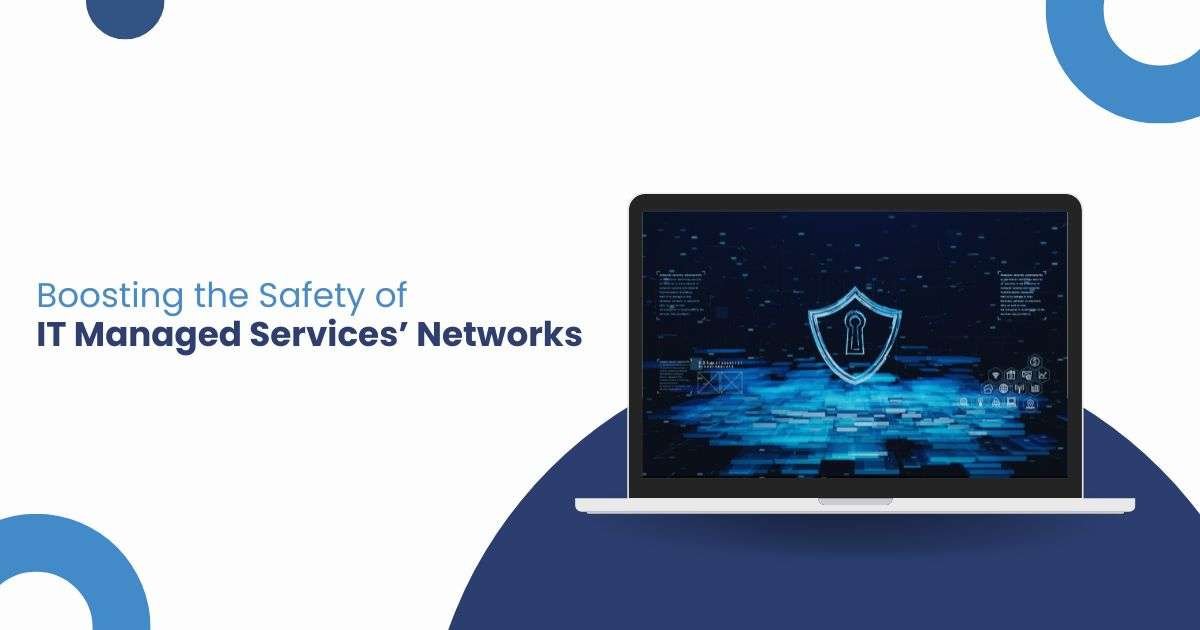Introduction:
In today’s interconnected digital landscape, network security stands as a paramount concern for businesses relying on IT Managed Services. As cyber threats continue to evolve in sophistication and frequency, organizations must fortify their defenses to safeguard sensitive data, maintain operational continuity, and preserve customer trust. This comprehensive guide explores essential principles, strategies, and technologies essential for bolstering network security within IT Managed Services environments.
Understanding the Threat Landscape:
In the realm of IT Managed Services, comprehending the diverse array of cyber threats is fundamental to developing robust defense mechanisms. From malware and ransomware to phishing attacks and insider threats, businesses face a multitude of challenges that can compromise the integrity of their networks and data.

Principles of Network Security in IT Managed Services:
Effective network security hinges upon adhering to foundational principles that encompass prevention, detection, and response. Organizations can build layered defenses to limit risks and secure vital assets by installing measures like intrusion detection systems, antivirus software, and firewalls.
Risk Assessment and Management:
Conducting thorough risk assessments is imperative for identifying vulnerabilities and prioritizing security initiatives within IT Managed Services environments. By evaluating potential threats, assessing their potential impact, and implementing risk mitigation strategies, businesses can proactively enhance their network security posture.
Access Control and Authentication:
Implementing robust access control mechanisms is essential for preventing unauthorized access to sensitive data and resources. Organizations can safeguard mission-critical data and systems by using robust authentication measures like role-based access controls (RBAC) and multi-factor authentication (MFA).
Network Segmentation and Isolation:
Network segmentation involves dividing a network into distinct segments to restrict the lateral movement of threats and contain potential breaches. Businesses can improve their resilience and reduce the effect of security incidents by segmenting networks according to user roles, departments, or applications.
Intrusion Detection and Prevention Systems:
Intrusion detection and prevention systems (IDPS) play a crucial role in identifying and thwarting malicious activities within IT Managed Services environments. Identify and respond to security threats in real-time with the help of intrusion detection and prevention systems (IDPS). These systems watch for unusual network traffic and activity.
Encryption and Data Protection in IT Managed Services:
Encrypting data at rest and in transit is essential for keeping sensitive information private and secure. Using strong encryption techniques and SSL/TLS protocols, companies may protect data from illegal access and interception.
Security Monitoring and Incident Response:
Establishing robust security monitoring capabilities enables organizations to detect and respond to security incidents swiftly. By employing security information and event management (SIEM) solutions, businesses can aggregate and analyze security logs in real-time, enabling proactive threat detection and incident response.
Secure Configuration Management in IT Managed Services:
Maintaining secure configurations across network devices, servers, and applications is essential for reducing the attack surface and minimizing security risks.
By adhering to industry best practices and implementing automated configuration management tools, organizations can enforce consistent security policies and mitigate potential vulnerabilities.
Patch Management and Vulnerability Assessment:
Regularly applying security patches and conducting vulnerability assessments are critical components of effective network security management. Organizations can reduce the likelihood of exploitation and improve resilience by fixing known vulnerabilities and vulnerabilities found through frequent assessments.
Compliance and Regulatory Considerations in IT Managed Services:
To avoid legal trouble and save money, it’s crucial to follow all applicable regulations and industry standards.b) Organizations can show they are serious about data protection and stay in compliance with rules like GDPR, HIPAA, and PCI DSS by keeping up with the latest developments in this space.
Disaster Recovery and Business Continuity Planning:
Developing robust disaster recovery (DR) and business continuity (BC) plans is vital for mitigating the impact of unforeseen disruptions on IT Managed Services operations.
By implementing redundant systems, data backups, and comprehensive recovery strategies, businesses can minimize downtime and ensure continuity of operations in the face of adversity.
Emerging Technologies and Trends in Network Security:
Staying ahead of emerging technologies and trends is crucial for maintaining a proactive approach to network securit from artificial intelligence (AI) and machine learning (ML) to zero trust architecture and secure access service edge (SASE), organizations must continually evaluate and adopt innovative solutions to address evolving threats effectively.
Final thoughts:
IT Managed Services must prioritize network security to maintain corporate operations and consumer trust amid digital transformation and cyber hazards.
Through proactive security, best practices, and emerging technologies, organizations can strengthen their defenses and confidently traverse the growing threat landscape.














